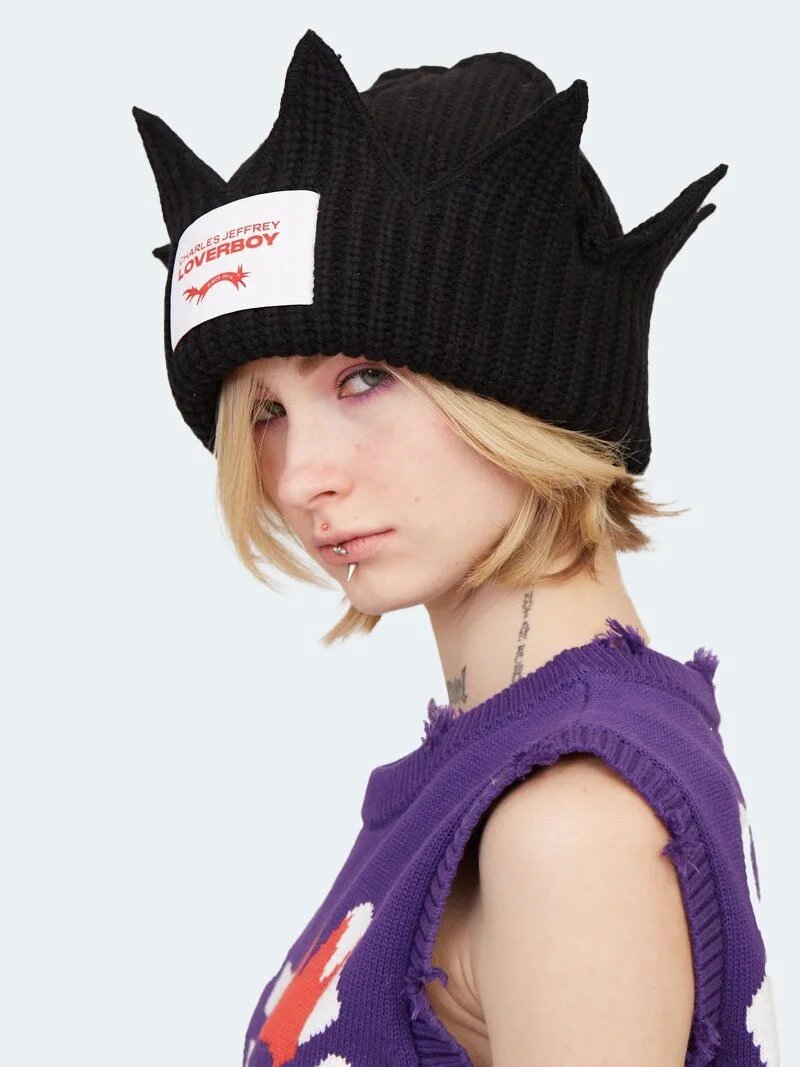In the vibrant ecosystem of modern fashion, where boundaries between luxury and streetwear blur, Charles Jeffrey LOVERBOY stands out as a bold beacon of creativity, rebellion, and queer identity. Established by the Scottish designer Charles Jeffrey, the LOVERBOY label has carved a niche for itself through its unapologetically expressive designs, theatrical runway presentations, and powerful cultural messaging. This is not just a clothing brand—it’s a movement.
The Origins of a Visionary Brand
Charles Jeffrey’s journey began in Glasgow, Scotland, and flourished in London, where he studied at Central Saint Martins—an institution known for producing avant-garde talents like Alexander McQueen and John Galliano. During his time there, Jeffrey launched the “LOVERBOY” club night, which quickly transformed into a cultural gathering for creatives and outsiders. This environment of freedom and performance art laid the foundation for his eponymous fashion label, officially founded in 2015.
LOVERBOY was never designed to follow trends. Instead, it emerged from a raw, energetic space where fashion was a form of rebellion, storytelling, and empowerment. It rapidly gained traction not only for its visual boldness but also for its narrative—one deeply rooted in queer culture, artistic expression, and Scottish heritage.
The Intersection of Streetwear and Couture
Charles Jeffrey LOVERBOY operates at a rare intersection where DIY punk aesthetics meet high fashion craftsmanship. Unlike conventional luxury brands that emphasize restraint and refinement, LOVERBOY thrives on maximalism, color, and emotional intensity. Its collections often feature exaggerated silhouettes, tartan prints, hand-drawn illustrations, and face paint motifs—symbols of both personal mythology and collective resistance.
In doing so, the label has blurred the lines between streetwear and couture. Streetwear, typically associated with casualwear, sneakers, and hoodies, is elevated through Jeffrey’s theatrical lens. Hoodies come with hand-painted artwork, trousers with deconstructed kilts, and shirts with irreverent slogans. It’s a celebration of uniqueness and non-conformity—values that resonate strongly with today’s youth culture.
A Queer Voice in Fashion
One of the defining features of Charles Jeffrey LOVERBOY is its outspoken celebration of LGBTQ+ identity. The brand doesn’t tokenize queerness for the sake of aesthetics; it embodies it at every level. From casting diverse models to integrating queer themes into every collection, LOVERBOY is a deeply political project disguised as fashion.
For Jeffrey, queerness is not just about sexuality—it’s about challenging norms, redefining beauty, and finding power in vulnerability. Many of his collections draw from personal experiences, including struggles with mental health, relationships, and identity. This honesty translates into garments that feel raw, personal, and fearless.
By embedding queer activism into its DNA, LOVERBOY isn’t just a fashion brand—it’s a platform. It gives voice to the marginalized, confronts taboos, and encourages its community to live out loud.
Iconic Pieces and Visual Language
LOVERBOY’s most iconic pieces often stem from its whimsical reinterpretations of traditional garments. The brand has made headlines for its:
-
Tartan kilts and trousers, celebrating Scottish heritage while pushing gender boundaries.
-
Beanies with exaggerated ears, now considered signature pieces that fuse playfulness with punk.
-
Hand-painted garments, merging fashion with visual art.
-
Structured tailoring with bold embellishments, bringing a modern edge to classic British styles.
What sets LOVERBOY apart is its visual storytelling. Every collection feels like a chapter in an ongoing narrative, combining myth, folklore, and autobiography. Shows often resemble theatrical performances more than typical runway presentations. Makeup, music, set design, and costume merge into a full-bodied artistic experience, creating immersive worlds that reflect the brand’s ethos.
Collaborations and Cultural Influence
LOVERBOY’s influence extends beyond its own collections. The brand has collaborated with major players in the fashion industry, including:
-
Mulberry, to reimagine British luxury accessories with a flamboyant twist.
-
Fred Perry, adding punk and queer overtones to classic sportswear.
-
Farfetch and Dover Street Market, allowing its pieces to reach global audiences.
In addition to fashion collaborations, Jeffrey’s LOVERBOY has been recognized in the broader art and design community. His work was featured in the Victoria & Albert Museum, and he was shortlisted for the LVMH Prize in 2017, affirming his role as one of the most influential designers of his generation.
Community and Inclusivity
A core pillar of LOVERBOY’ HAT identity is its community-centric approach. The brand grew out of a club night—an inclusive space for creatives and outsiders. That sense of belonging continues today through casting, campaigns, and messaging. Models are often real people from London’s underground scenes—musicians, artists, performers—not just industry regulars.
LOVERBOY is not about perfection. It’s about authenticity, imperfection, and individuality. The clothes invite people to be themselves, to experiment, and to reject the binary thinking that has long dominated fashion. Whether it’s through gender-fluid designs or the embrace of neurodiversity, the brand continues to open doors and challenge gatekeepers.
Sustainability and Future Vision
While the fashion industry increasingly grapples with sustainability, LOVERBOY is making strides to embrace eco-conscious practices. From using deadstock fabrics and organic materials to advocating for mindful consumption, the brand is aligning its radical aesthetic with responsible production.
Jeffrey’s vision of the future is one where fashion is not just an industry but a force for change. He aims to expand the brand into a multimedia platform that includes film, theater, and community initiatives. This holistic approach means LOVERBOY could become a cultural institution—not just a fashion house.
Why It Matters
Charles Jeffrey LOVERBOY matters because it represents the future of fashion—where personal identity, art, activism, and community all converge. In an industry often criticized for its elitism and lack of inclusivity, LOVERBOY provides a refreshing alternative.
It invites people to dress not for trends, but for truth. It encourages expression over conformity. And it demonstrates that luxury doesn’t have to mean exclusivity—it can mean empowerment.
LOVERBOY is not about looking good by society’s standards; it’s about feeling powerful in your own skin. Whether you’re wearing a beanie with horns or a sharply tailored tartan suit, you’re making a statement: you belong, just as you are.
Final Thoughts
Charles Jeffrey LOVERBOY is a powerful example of how fashion can transcend fabric and form to become a tool for social expression. It captures the energy of streetwear, the elegance of luxury, and the urgency of activism in one striking package.
As fashion continues to evolve, the brands that endure will be those that stand for something beyond style. LOVERBOY stands for individuality, art, freedom, and pride. And that’s a legacy worth wearing.



